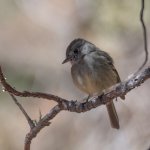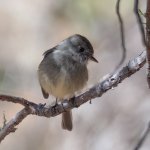Photographed two days ago in Madera Canyon, AZ. Leaning towards Western Wood-Pewee, but the silent bird didn't act like one. They're usually higher and sallying after insects; this one was at eye level. Wrong habitat for Willow, and much of the rest was wrong for the usual suspects of empids
Thanks!
Ruff-leg
Thanks!
Ruff-leg






